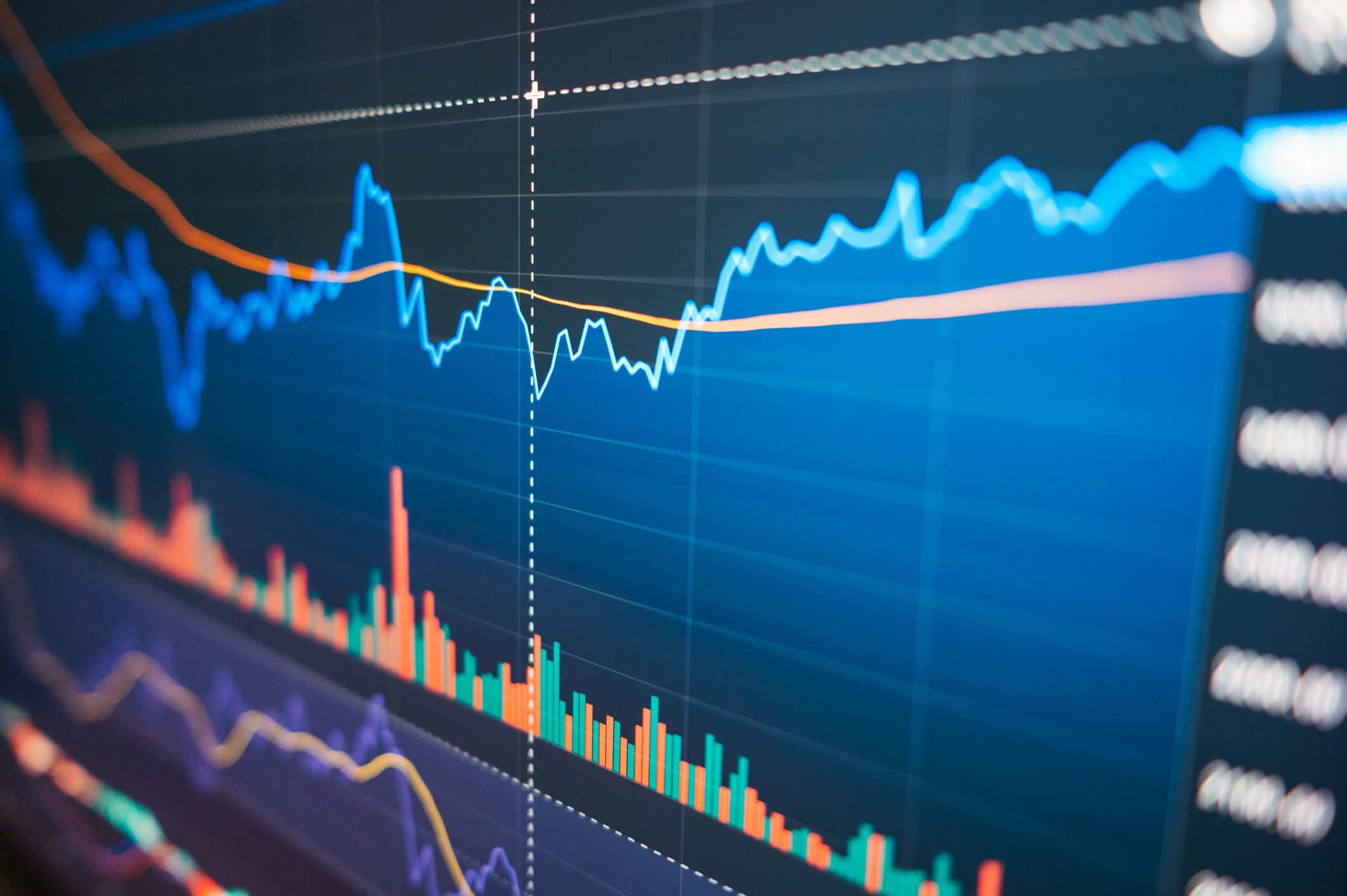Lessons from the May 6 Flash Crash
The official report clarifies the cause of the market mayhem, but the solution for preventing another episode is still a mystery.

What's the surprising conclusion of the official “flash crash” report? Neither high-frequency traders nor “dark pools” of professionals who match trades without displaying quotes to the public triggered the debacle. It turns out that ground zero was likely located in America’s heartland, at an old-style mutual fund shop not specifically identified but widely reported to be Waddell & Reed, based in Overland Park, Kan.
The 100-page-plus report, issued October 1 by the Securities and Exchange Commission and the Commodity Futures Trading Commission, painstakingly reconstructs the scary events that took place across a myriad of securities and markets on May 6. Against a backdrop of unusually high volatility and worries about an escalating European debt crisis, and in accordance with a preset algorithm, at 2:32 p.m. a mutual fund firm initiated a program to sell $4.1 billion worth of E-Mini futures contracts, which track Standard & Poor’s 500-stock index.
According to the SEC-CFTC report, the sell program set in motion a host of other trading strategies. Conducting those strategies were high-frequency traders who use computer programs to profit from often-minuscule price moves, arbitrageurs who trade back and forth between the futures and stock markets, market makers, and retail stock investors.

Sign up for Kiplinger’s Free E-Newsletters
Profit and prosper with the best of expert advice on investing, taxes, retirement, personal finance and more - straight to your e-mail.
Profit and prosper with the best of expert advice - straight to your e-mail.
During the chaos, some two billion shares traded, with total volume exceeding $56 billion. More than 300 stocks and exchange-traded funds moved more than 60% away from their most-recent prices, and trades were executed at absurd prices – as low as penny or less in some instances and as high as $100,000 in others. The trades were so preposterous that exchanges canceled more than 20,000 of them.
The mayhem didn’t last long. Broad market indexes dropped more than 5% in five minutes, then rebounded almost entirely over the next 90 seconds. Individual stocks righted themselves in about 20 minutes.
But the effect of the flash crash on the confidence of ordinary investors has been long-lasting and devastating. Themis Trading, a Chatham, N.J., brokerage, ticks off the damage: From the day of the crash through August, investors had withdrawn nearly $57 billion from U.S. stock funds; average daily trading volume was down 15% from the same period last year; and, despite solid stock performance and strong corporate results, sentiment surveys for months have found investors soured on the market.
A few key lessons emerged from the report:
• The first is that high trading volume and market liquidity are not synonymous. “We’ve been saying that for years,” says Themis's Joseph Saluzzi. “Volume is when Citigroup buys or sells a million shares. Liquidity is when you need to sell a million shares and there’s someone on the other end to buy it.”
• Another lesson is that regardless of any circuit breakers that exchanges might impose, high-powered traders have their own versions of a trading pause, based on their own market signals. If they all happen to hit the exits at once, it’s disaster.
• A third lesson is that all investors need to remember how closely tied the futures and other derivatives markets are to the stock market.
Now that we have more details than most of us can digest about the crash, it seems clear that pointing a finger at the prime mover is far less important than the ongoing examination of our complex, opaque and fragmented securities markets. That includes looking at the obligations of the pros who are most plugged in to the markets as well as the expectations of ordinary investors who are just trying to put their kids through school and build retirement savings.
The good news is that recent actions and a handful of new proposals already aim to restore more order to the market. Circuit breakers to slow runaway markets have been extended to individual stocks, to be triggered by a price move of 10% or more within five minutes. It’s likely that the SEC will tweak the circuit breakers to allow trading within a pre-specified parameter, up or down from the stock’s most recent price. The SEC-CFTC report also hinted that the trigger points for market-wide circuit breakers -- which were never hit on May 6 -- might need to be adjusted. And exchanges now have proposed clear and objective measures for determining when trades should be canceled -- a point of confusion in the days after May 6.
The SEC has also proposed rules that would prohibit broker-dealers from giving professional, electronic-trading customers direct access to the markets, a practice that allows them to buy and sell without placing orders through an intermediary. Further, the SEC wants beefed-up reporting from such large traders and a consistent way to track trades across markets. A proposal first considered last year has been revived: A ban on “flash orders,” which are displayed to some traders for a fraction of a second before being executed, is aimed at eliminating an unfair advantage for the computer jockeys.
The SEC will almost certainly address “stub quotes,” bids to buy or offers to sell securities at ridiculous prices. They fulfill a market maker’s obligation to provide a two-sided quote, but are never meant to be executed -- although many were on May 6. And the obligations of official and unofficial market makers will surely be clarified, including high-volume traders who currently fall outside the regulatory scheme entirely. “We should consider the basic premise…that the professional trading firms with the best access to the markets should be subject to obligations to trade in ways that support the stability and fairness of the markets,” SEC chairwoman Mary Schapiro told a group of economists in September.
As for market reforms impinging directly on individual investors, the most likely is a limitation on stop-loss market orders. Investors use stop-loss orders, triggered once a stock crosses a preset threshold, to protect themselves in market declines. But because market orders are executed at the best available price (which, as we know now, might be wacky), regulators may curtail the execution of market orders too far away from the price of a security’s most recent trade -- making the orders more akin to limit orders, which are executed only if the investor can obtain the limit price he or she specifies. But you don’t have to wait for the regulators. The safest way to trade in today’s markets is with limit orders on everything, starting yesterday.
It may be years before we know whether these and any other reforms are enough to restore confidence in the market. “The amount of change that we’ll see in the markets in the next year alone will be unprecedented,” says Christopher Nagy, managing director of TD Ameritrade. “It will fundamentally change the market structure -- for the good.”
Let’s hope.
Get Kiplinger Today newsletter — free
Profit and prosper with the best of Kiplinger's advice on investing, taxes, retirement, personal finance and much more. Delivered daily. Enter your email in the box and click Sign Me Up.

Anne Kates Smith brings Wall Street to Main Street, with decades of experience covering investments and personal finance for real people trying to navigate fast-changing markets, preserve financial security or plan for the future. She oversees the magazine's investing coverage, authors Kiplinger’s biannual stock-market outlooks and writes the "Your Mind and Your Money" column, a take on behavioral finance and how investors can get out of their own way. Smith began her journalism career as a writer and columnist for USA Today. Prior to joining Kiplinger, she was a senior editor at U.S. News & World Report and a contributing columnist for TheStreet. Smith is a graduate of St. John's College in Annapolis, Md., the third-oldest college in America.
-
 Should You Hire a Public Adjuster for Your Insurance Claim?
Should You Hire a Public Adjuster for Your Insurance Claim?As natural disasters strike more often, insurance clients are asking, 'What should I do, or who should I hire, if my insurance company is jerking me around?'
By H. Dennis Beaver, Esq.
-
 Tips to Help Entrepreneurs Create Self-Sustaining Businesses
Tips to Help Entrepreneurs Create Self-Sustaining BusinessesWith the right processes and people in place, a truly sustainable business can be efficiently passed on to a successor and run profitably on its own.
By Jason L Smith, CEP®, BPC
-
 Why Is Warren Buffett Selling So Much Stock?
Why Is Warren Buffett Selling So Much Stock?Berkshire Hathaway is dumping equities, hoarding cash and making market participants nervous.
By Dan Burrows
-
 If You'd Put $1,000 Into Google Stock 20 Years Ago, Here's What You'd Have Today
If You'd Put $1,000 Into Google Stock 20 Years Ago, Here's What You'd Have TodayGoogle parent Alphabet has been a market-beating machine for ages.
By Dan Burrows
-
 Stock Market Today: Stocks Retreat Ahead of Nvidia Earnings
Stock Market Today: Stocks Retreat Ahead of Nvidia EarningsMarkets lost ground on light volume Wednesday as traders keyed on AI bellwether Nvidia earnings after the close.
By Dan Burrows
-
 Stock Market Today: Stocks Edge Higher With Nvidia Earnings in Focus
Stock Market Today: Stocks Edge Higher With Nvidia Earnings in FocusNvidia stock gained ground ahead of tomorrow's after-the-close earnings event, while Super Micro Computer got hit by a short seller report.
By Karee Venema
-
 Stock Market Today: Dow Hits New Record Closing High
Stock Market Today: Dow Hits New Record Closing HighThe Nasdaq Composite and S&P 500 finished in the red as semiconductor stocks struggled.
By Karee Venema
-
 Stock Market Today: Stocks Pop After Powell's Jackson Hole Speech
Stock Market Today: Stocks Pop After Powell's Jackson Hole SpeechFed Chair Powell's Jackson Hole speech struck a dovish tone which sent stocks soaring Friday.
By Karee Venema
-
 Stock Market Today: Stocks Drop Ahead of Powell's Jackson Hole Speech
Stock Market Today: Stocks Drop Ahead of Powell's Jackson Hole SpeechSentiment turned cautious ahead of Fed Chair Powell's highly anticipated speech Friday at the Jackson Hole Economic Symposium.
By Karee Venema
-
 Stock Market Today: Stocks Rise After Jobs Data Lifts Rate-Cut Odds
Stock Market Today: Stocks Rise After Jobs Data Lifts Rate-Cut OddsPreliminary data from the Bureau of Labor Statistics shows job growth was lower than previously estimated.
By Karee Venema